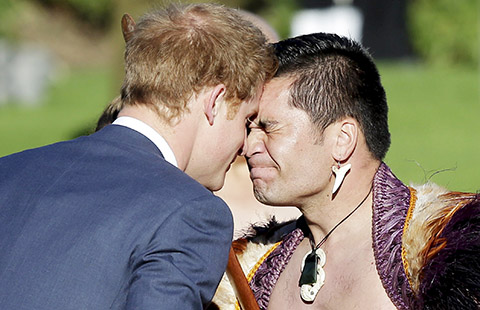Peking Man tooth reveals details of ancient humans
Updated: 2015-05-11 09:30
(English.news.cn)
|
||||||||
UNEXPECTED FIND
For a long time after World War II, the only specimens of Peking Man fossils that survived the original excavation were three teeth at Uppsala University's collection. It was not until 2011 that Kundrat and Jan Ove R. Ebbestad, curator of the Museum of Evolution at the university, found the fourth tooth.
Kundrat discovered the tooth while looking through almost-forgotten expedition crates. About 40 crates shipped from China to Uppsala almost a century ago held vertebrate fossils.
Swiss paleontologist Carl Wiman had been in charge of identifying and describing the fossils but after his death in 1944, the direction of research changed, leaving the 40 crates unopened and forgotten.
On March 21, 2011, Kundrat and Ebbestad opened a crate that bore the letters ZKD, the acronym for Zhoukoudian, the Peking Man fossil site to find tooth fragments.
He sensed the importance of the discovery and contacted Liu Wu and Tong Haowen, also from the Chinese institute, to help them identify the tooth.
IMMEASURABLE LOSS
In the middle of 19th century, Western archeologists scoured the globe for evidence of our ancestors. In the early 20th century, they arrived in China.
In 1910s, when visiting a hill near the village of Zhoukoudian in southwest Beijing, Swedish geologist Johan Gunnar Andresson noticed some peculiar quartz fragments, which were not native to the site and resembled primitive stone tools.
Otto Zdansky from Uppsala University unearthed the first dental remains of Peking Man in 1921.
The second tooth was found among other vertebrate fossils in the crates that were shipped to Uppsala for research.
After that, Weng Wenhao, then director of the Geological Survey of China; Davidson Black, a Canadian paleoanthropologist and Anders Birger Bohlin, a fresh Uppsala graduate; then took over the excavation.
On Oct. 16, 1927, Bohlin recovered another tooth of the Peking Man from the same layer where Zdansky found his first specimen. Bohlin's specimen was described by Black and became the holotype of the new extinct hominid.
- Sixth policeman dies after gun battle in Macedonia
- Houthis, Yemeni army welcome Saudi proposal for 5-day truce
- Japan 'should apologize to other Asian countries'
- Five facts to know about Russia's V-Day parades
- Egypt court sentences Mubarak, sons to three years in jail
- DPRK test-fires three short-range missiles

 Super fit mother works out with her three children
Super fit mother works out with her three children
 Fireworks explode across Russia to celebrate Victory Day
Fireworks explode across Russia to celebrate Victory Day
 Mother's Day marked across China
Mother's Day marked across China Prince Harry receives Maori greetings in New Zealand
Prince Harry receives Maori greetings in New Zealand
 In photos: Russia holds V-Day parade
In photos: Russia holds V-Day parade
 Huizhou, home to Huizhou Culture
Huizhou, home to Huizhou Culture
 Actress poses with son and daughter for Mother's Day
Actress poses with son and daughter for Mother's Day
 Media players discuss bilateral role
Media players discuss bilateral role
Most Viewed
Editor's Picks

|

|

|

|

|

|
Today's Top News
Chinese president arrives in Belarus for state visit
China moves up to 17th in global tourism survey
Indiana governor going to China
for jobs
Wang Qishan highlights Party discipline in anti-corruption effort
Summer Palace replica opens to public amid controversy
Plane skids off runway in SE China
Chinese investors get tips on investing in US
Media's role called crucial
US Weekly

|

|







